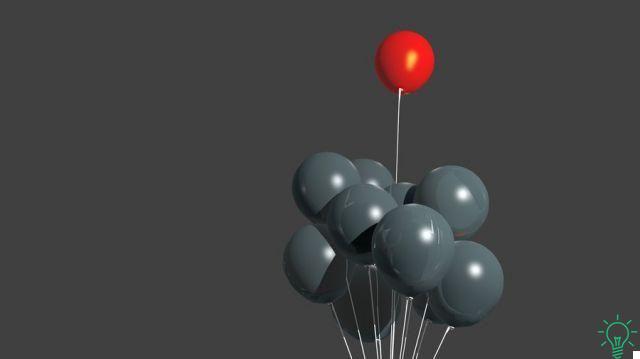Coercive persuasion is a cognitive mechanism that works through false beliefs and misconceptions. It leads a person to believe that it is desirable and convenient to perpetuate the bond he has with his abuser.

Last update: February 18, 2022
Coercive persuasion is a mechanism present in many contexts of abuse or mistreatment. It is present in abusive relationships, in authoritarian families, or in any bond that is based on the pattern of control and submission.
This mechanism is implemented so that the victim accepts and prolongs the abusive bond. Coercive persuasion exploits emotions such as fear, love, guilt, shame, and the rejection of loneliness.
When a dyad of executioner and victim is established, strong bonds of dependence are also created. One needs the other. Violence is at the heart of everything and uses multiple tools ranging from coercive persuasion to physical violence. All this generates a circle from which it is difficult to get out.
“What is the basis, the essential, the crucial principle that differentiates freedom from slavery? It is the principle of voluntary action as opposed to physical coercion or compulsion ”.
-Ayn Rand-
Coercive persuasion
Coercive persuasion is a mechanism that operates in abusive relationships. Its function is instill in the victim the conviction that he deeply needs the aggressor; the attacker inoculates the victim's thoughts that, despite the suffering, it is much better for her to be with him than without him.
"You're not worth anything, where do you think you're going?" it is a projection of disability that puts the victim in a highly vulnerable position. This mechanism uses code, but is not limited to this.
These are verbal assaults whose content aims to disqualify the victim. The self-concept is attached, inferiority is emphasized, and gaps and defects are highlighted. Speech aims to destroy the other person's self-esteem and trust.
However, the issue is not just about words. Coercive persuasion also works through gestures and actions. These include physical assaults, threats (veiled or not), deprivation, isolation of the victim, etc. All of these aspects operate as a set of arguments to "persuade" the other that there are no escape routes.
Fear in the victim
Fear is an essential tool in the implementation of coercive persuasion. It takes the form of a threat, but can also sometimes turn into real action. A whole series of warnings about the great evils that will happen if the bond with the aggressor is broken.
For example, this occurs when an employee is subjected to sexual harassment by his boss. In addition to the obvious fear of losing his job, he is warned of the absence of witnesses and therefore of the uselessness of any legal action. Or they are told that no one will support a possible claim, because everyone is dependent on the job and will not go against the boss.
The use of fear is intended to paralyze the victim's response. In coercive persuasion there is a sort of "unpredictable mistreatment", that is, capable of confusing the person who is the object of it. It is this state that can reduce or undermine the ability to react in the face of aggression.
Affection and guilt
Affection and guilt are other emotions functional to coercive persuasion. It is not uncommon for the victim to harbor feelings of affection towards his executioner.
Sometimes because it is the partner, a relative or a friend. Other times because the person is assumed to have done something significantly important to the victim.
This affection leads to a special "understanding" of aggression. Aggressive attitudes are often downplayed or seen as an exception to the rule. The victim even comes to believe that these are transient episodes. This is a form of denial which, in turn, fuels the cycle of violence, justifies addiction, and becomes a support for coercive persuasion.
Guilt and shame play a similar role. In the context of an abusive relationship it is not uncommon for the victim to blame himself. This gives you a certain sense of control over what happens. It also makes the assaults a little more reasonable. However, it also helps to paralyze the ability to react.
And also It is common for the victim to feel ashamed of having been attacked. In one way or another, the aggressor is seen as an extension of oneself. So what it does, especially what it hurts, generates shame. Fear, affection, guilt and shame are the tools of coercive persuasion. Together, they perpetuate cycles of violence.


























